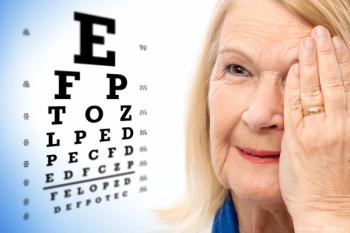
Can DNA injections restore sight?
The injection of DNA into the optic nerve resulted in light perception vision in patients with no light perception and very low vision, according to Sunita Agarwal, MD.
The injection of DNA into the optic nerve resulted in light perception vision in patients with no light perception and very low vision, according to Sunita Agarwal, MD.
Dr Agarwal, from Agarwal's Group of Eye Hospitals, Chennai, India, reported on five patients who have been treated with DNA injections. The DNA was amplified to more than 100 µm by manipulation with an injection of a biotech product (MANA) that was added to the patients' plasma under a microscope.
"This formulation has the advantage of layering on the patient's DNA molecule and amplifying it from a 0.0001 µm particle of DNA in the blood to over 100 µm using MANA. It is not a chemical, pharmaceutical, or an animal product," she explained.
The DNA is picked up using a 5 µm cannula and loaded into a 10 µL syringe with a 33- or 36-gauge needle. The patients who have either no vision or very low vision received intrapapillary injections of the customized MANA through the pars plana into the optic nerve. Dr Agarwal first used this technique in animals a decade ago and progressed to patients five years ago.
Four patients had optic atrophy; three of these had no perception of light and one had hand movement vision near the face. The fifth patient had age-related macular degeneration. Patients were examined 30 minutes after the procedure, for the next 10 days, and one month after the procedure, according to Dr Agarwal.
Of the four cases of the optic nerve disorders, two improved from no light perception to perception of light. One patient remained the same as before the procedure. The patient with hand movement vision near the face progressed to 6/60 vision.
"Amazingly, patients who had had no light perception for a long period gained light perception within seconds and minutes following an injection into the optic nerve," she said. "These injections of DNA showed phenomenal results unparalleled in the history of ophthalmology."
Read
ASCRS 2008 meeting highlights.
Newsletter
Get the essential updates shaping the future of pharma manufacturing and compliance—subscribe today to Pharmaceutical Technology and never miss a breakthrough.















































